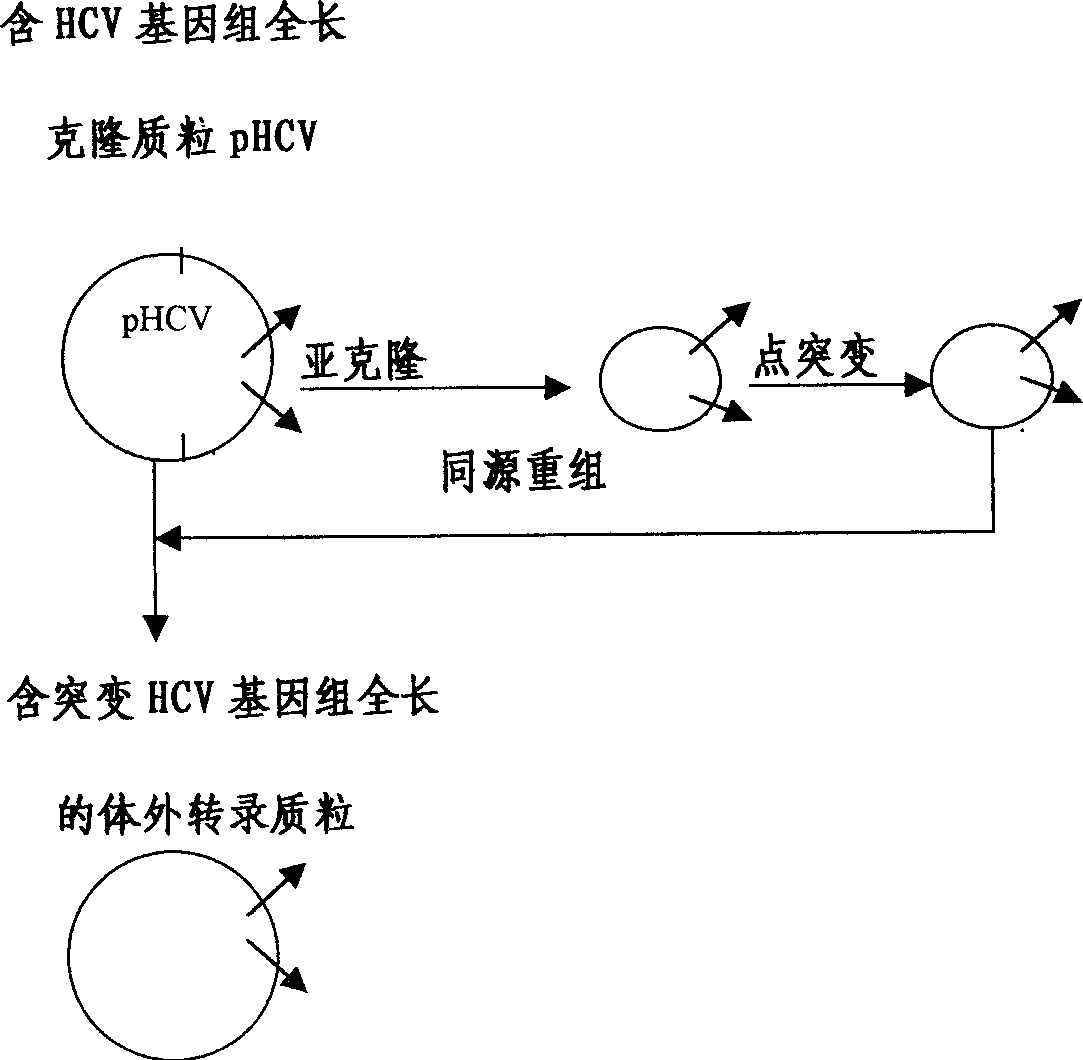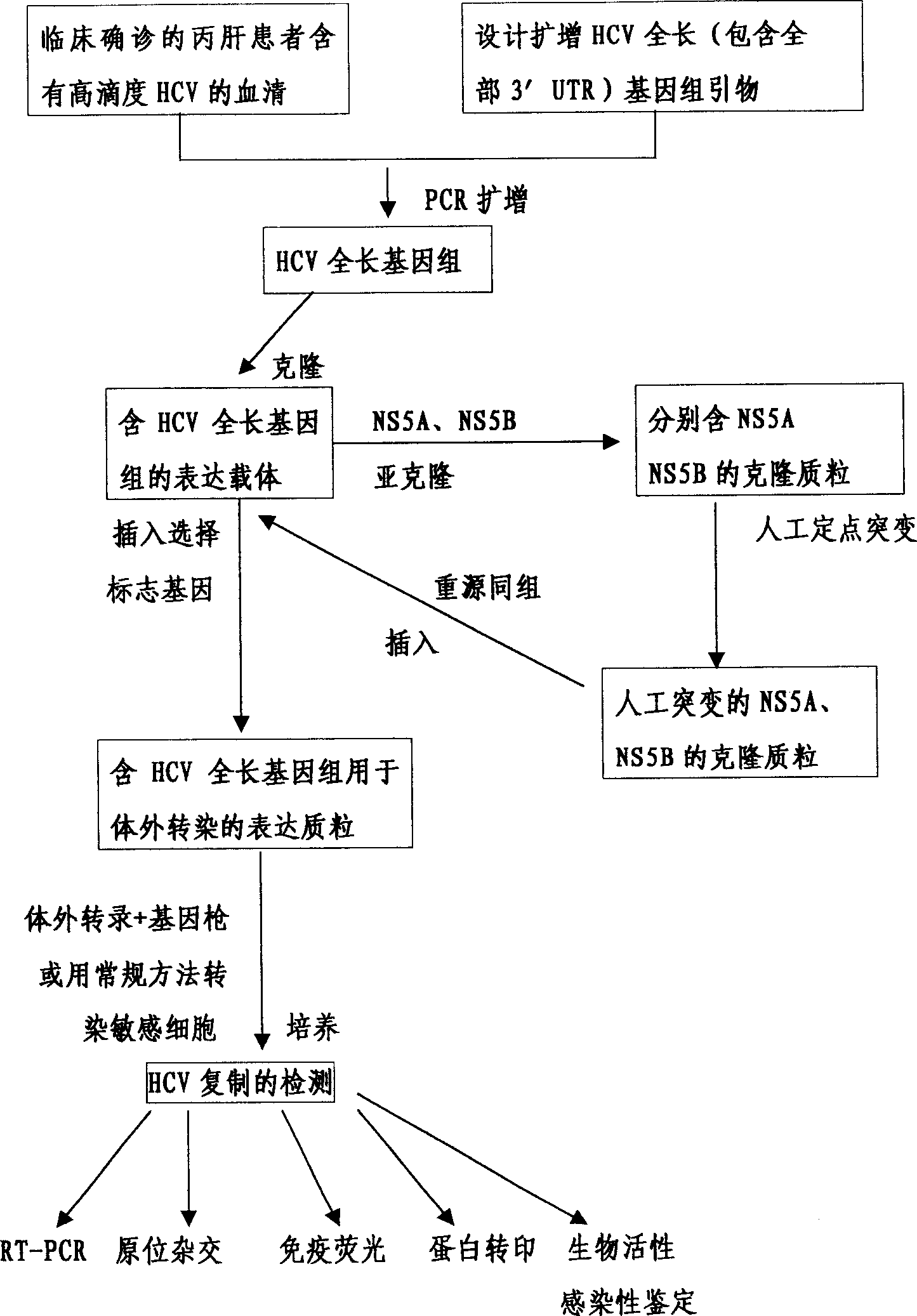Hepatitis C virus and its external cell culture method
An in vitro cell culture, hepatitis C technology, applied in the direction of viruses/phages, antiviral agents, botanical equipment and methods, etc. Scientific research reporting system products and other issues
- Summary
- Abstract
- Description
- Claims
- Application Information
AI Technical Summary
Problems solved by technology
Method used
Image
Examples
Embodiment Construction
[0030] specific implementation
[0031] The technical route of this embodiment is as follows: image 3 As shown, the overall process is as described above, where:
[0032] HCV full-length genome amplification process, first design 8 PCR amplification primers based on the conserved sequence of HCV 1b, restriction sites on the cloning vector and specific fragments of the HCV genome, and use the overlapping RT-PCR method to gradually amplify 9.6Kb long full-length genome. The 8 artificially synthesized primers all have enzyme cutting sites for cloning and connection at their 5′ ends, and their positions ensure that each fragment of the HCV genome will be obtained and connected in order to form a complete HCV full-length genome, especially including A nucleotide sequence after the 3'PolyA is removed.
[0033] The sequences of the 8 primers are as follows:
[0034] Primer 1:
[0035] GCC GAA TTC GCC AGC CCC CTG ATG GGG GC
[0036] EcoR 1
[0037] Primer 2:
[00...
PUM
 Login to View More
Login to View More Abstract
Description
Claims
Application Information
 Login to View More
Login to View More - R&D
- Intellectual Property
- Life Sciences
- Materials
- Tech Scout
- Unparalleled Data Quality
- Higher Quality Content
- 60% Fewer Hallucinations
Browse by: Latest US Patents, China's latest patents, Technical Efficacy Thesaurus, Application Domain, Technology Topic, Popular Technical Reports.
© 2025 PatSnap. All rights reserved.Legal|Privacy policy|Modern Slavery Act Transparency Statement|Sitemap|About US| Contact US: help@patsnap.com



